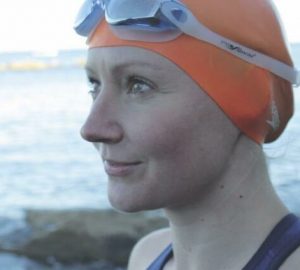How far is 3km?
It sounds like a trick question: 3km is 3,000m right? No question about it, unless perhaps you’re a physicist and argue there’s no such thing as fixed distances in three-dimensional space once we bring relativity into the equation.
However, open water swimmers don’t need Einstein to deviate from a fixed distance.
After a recent 3km swim I spoke to a couple of swimmers who had been wearing GPS devices. One had recorded the swim as 3.9km and the other at 3.7km.
One possible explanation is that the course was too long (actually it probably was, but not 900m too long), another is that the GPS devices are not accurate. Apparently some GPS devices don’t record so well while swimming due to the rotating movement of the arm and the time spent underwater. However, the devices in question were supposed to correct for this.
The only other explanation if we discount relativistic physics (which we safely can, although interestingly the makers of GPS satellites cannot) is that the swimmers didn’t swim in a straight line.
One of the swimmers said, “if I look at my times per 100m I was actually swimming pretty fast.”
In open water however, the winner is not the person who swims fastest per 100m but the one who crosses the line first.
There are good tactical reasons to not always take the straightest line in an open water swim. In races, you might want to change course for a better line around a turn buoy or to avoid being stalled in the scrum. It might be worth deviating from the straight and narrow to stick with the pack you’re drafting. In a Channel crossing only the very fastest swimmers on the lowest tides follow anything like a direct line to France. Everyone else must allow the currents to sweep them up and down. Trying to maintain a straight line would be folly.
Apart from these cases though, the direct route is best. If it takes you 90 seconds to swim 100m then a 10m deviation will cost you 9 seconds. Plenty of races have been won or lost by margins much less than that.
Swimming straight is an open water skill that can be learnt. In a safe and controlled environment try swimming with your eyes closed and see how long you can hold a line. In open water, practise increasing the number of strokes you take between sighting, and practise looking at objects either side of you to help you keep on track. In training, practise bilateral breathing and concentrate on keeping your stroke symmetrical.
If you want to shrink a distance you’re going to have to swim at close to the speed of light. If you can’t do that, at least try to avoid lengthening it.






